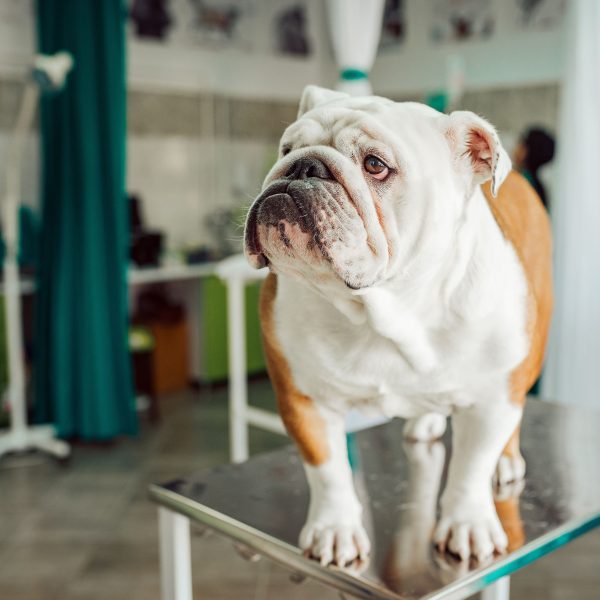What to Know About Cherry Eye in Dogs

Eye health is important for any dog, so it can be scary when you notice an abnormality in their eyes. If you notice a large pink or reddish bump in the corner of your dog’s eye, it might be cherry eye. The official name is actually “prolapse of the third eyelid gland,” but many people just call it cherry eye. Here’s what to know about cherry eye in dogs:
What is Cherry Eye in Dogs?
Cherry eye is a common eye problem in dogs. This is also known as prolapse of the third eyelid gland and is an eye condition that sometimes occurs in dogs. Most mammals, including dogs, have a third eyelid and gland, also known as the nictitating membrane.
This membrane helps protect the eye during hunting or fighting as well as producing a large amount of the eye’s protective tear film. When this gland prolapses or pops out, it results in cherry eye.
What Causes Cherry Eye in Dogs?
Typically, this third eyelid and gland are attached via fibrous materials to the lower rim of the dog’s eyes. When this connective tissue is weakened, the eyelid and gland can fall and pop out of its typical placement. A reddish or pinkish mass resembling a cherry will appear in the corner of the dog’s eye. It can occur in one or both eyes.
Cherry eye can occur in any dog although some breeds seem to be more susceptible to it than others. These breeds include but aren’t limited to the Basset Hound, Maltese, Beagle, Cocker Spaniel, and Great Dane. Brachycephalic (snub-nosed or flat-faced) breeds are also more susceptible to cherry eye.
Can You Prevent Cherry Eye?
There aren’t any proven strategies to prevent cherry eye. In some dogs, allergies seem to be a contributing factor. If you notice your dog exhibiting allergy symptoms like watery or itchy eyes, schedule an appointment with your veterinarian. They can help find a solution to help your dog survive seasonal allergies.
Should Your Dog See a Veterinary Ophthalmologist?
If you see signs of cherry eye, make an appointment with your regular veterinarian first. Most times, the required procedure can be done by a veterinarian but some breeds are harder to treat than others including Great Danes, Cocker Spaniels, and Bulldogs.
However, your veterinarian may refer you to see a veterinary ophthalmologist for specific reasons. These signs you should see a veterinary ophthalmologist can include:
- The gland has been prolapsed for quite a long time, such as months or even years
- The eye cartilage is bent
- The gland has prolapsed after a previous surgery
- The vet is not comfortable performing the surgery or Is less familiar with performing the surgery on a particular breed
How to Treat Cherry Eye in Dogs
Unfortunately, surgery is required to treat cherry eye in dogs. The third eyelid gland needs to be replaced and can only be done with surgery. It is critical to get treatment as soon as possible in order to prevent permanent damage. Because this third eyelid gland is responsible for the majority of the eye’s tear film production, your dog could suffer from dry eye. Dry eyes can severely impair a dog’s vision.
It’s important to note that removal of the gland is not a recommended form of treatment and should not be considered. Until your dog can be scheduled for surgery, you should be administering eye drops prescribed by a veterinarian to help keep your dog’s eye moist and lubricated.
Be aware that while initially just one eye may be affected, there’s a higher chance that the other eye’s gland could also prolapse. However, a preventative procedure is not recommended because it can cause a prolapse after surgery.
Prognosis of Cherry Eye in Dogs
Typically, the prolapsed gland returns to normal within a few weeks of surgery. However, up to 20% of dogs can experience a re-prolapse of the affected eyelid gland. If this happens, an additional surgery is required.
Make sure to protect the eye while you care for your dog after surgery. Using a cone or other alternative methods to keep your dog from scratching their eye is imperative.
This is an overview of what to know about cherry eye in dogs. While it looks scary, it can be resolved with surgery. Soon, your dog will be on the mend!
